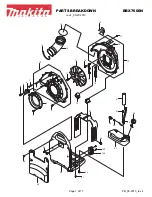
Q-Sense Technical Reference Manual
Proprietary
29 of 188
Black Box: The system has detected an error and is currently logging data in the
internal memory. The log file can be exported later for service use.
2.7
Application Methods
Method is the type of the test program. Q-SENSE supports the following methods:
Limits: A set of predetermined stimuli is emitted, and for each stimulus, the tested
subject is required to respond (stop the stimulus) when perceiving a predefined
sensation. For more details refer to section
Levels: A set of stimuli is emitted, and for each stimulus, the subject is required to
respond. The following stimulus is calculated according to the subject's response. For
more details, refer to section
Thermal Sensory Limen (TSL): The temperature direction changes according to the
subject's response, alternating between increasing temperature and decreasing
temperature. For more details, refer to section
Ramp & Hold (optional, available with specific license): The temperature of the
stimulus is maintained for a predetermined duration.
VAS Search (optional, available with specific license): A set of Ramp & Hold
stimuli is emitted, and for each stimulus, the subject is required to report the
perceived level of pain. The following stimulus is calculated according to the
subject's response.
2.7.1
Limits Method
This reaction time inclusive method consists of stimuli of continuously changing intensity. With
each stimulus, when the subject perceives a predefined sensation, he/she manually stops the
stimulus.
The Limits method is the most widely used method for threshold determination, because it
requires the shortest test procedure of all methods, and it can measure not only pain
thresholds, but also non-painful thermal thresholds.
For detailed information refer to section
, page
2.7.2
Levels Method
In the Levels method, stimuli are increased by a predetermined initial step until the first YES
response. Stimuli then decreased by one half the initial step until a NO is given.
Subsequently, the direction changes according to the response: increase for NO and decrease
for YES. The step is halved at every direction change. The test is terminated when the step
reaches a small enough size, as pre-determined by the user. Threshold is determined by
taking the mean of last YES and the last NO. This is the shortest of all constant stimuli
methods.
A modified Levels method allows you to hold Temperature for predefined Time at destination.
For detailed information refer to section
, page
2.7.3
Thermal Sensory Limen (TSL)
The TSL is another reaction time dependent method is the detection of Thermal Sensory
Limen (T.S.L.). In this algorithm, once started, the stimulus temperature does not stop at
adaptation, rather, it continues directly from the warm threshold to the cold threshold and vice
versa. After several oscillations between warm and cold sensory thresholds, the ‘Limen’ of no
Before using each of these methods, make sure you have read
section
, which addresses
the following topics: Tested subject selection, Program selection, and
Stimuli administration.
Summary of Contents for TSA 2001
Page 1: ...Proprietary 1 of 188 Small Fiber Test Technical Reference Manual ...
Page 99: ...Q Sense Technical Reference Manual Proprietary 99 of 188 Analysis Report Examples ...
Page 109: ...Q Sense Technical Reference Manual Proprietary 109 of 188 ...
Page 181: ...Q Sense Technical Reference Manual Proprietary 181 of 188 Figure 114 Pain Rating Limits ...
















































